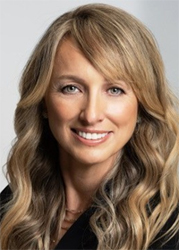The Nuances Of Biopharma Portfolio Management

By Matthew Pillar, Editor, Bioprocess Online

Here’s a quick story about biopharma baptism by fire. In 2011, Lara Sullivan, M.D. joined Pfizer as VP of Strategy & Portfolio Solutions in the company’s Worldwide R&D division just about two weeks after the Wall Street Journal ran a detailed story about the big pharma juggernaut cutting its R&D budget. She clearly had her work cut out for her. But, as she recounted on episode 101 of the Business of Biotech, that experience was a key inflection point in her career and one that would shape her leadership approach in ensuing roles, including her founding of SpringWorks Therapeutics and her current role as President & CEO at Pyxis Oncology.
“After 10 years of serial acquisitions, Pfizer had lost that discipline. There was a recognition that all these bolt-on acquisitions resulted in some great programs, but we needed to create an ongoing cadence of discipline in how we were funding our discovery through phase 2 research and clinical programs,” she says. Collectively, she recalls, it took the organization about two years to really embed that mindset and execute on it.

“I remember thinking, everybody understands that we're doing this [cutting the R&D budget]. There's a Wall Street Journal article about it. And I'm coming into this new role, I've got my fresh analytics from McKinsey and my Wharton degree, and I said alright guys, here's how you slice and dice it. And in that very first meeting, one month into the job, they all threw tomatoes at me.”
She was discouraged on her walk home that day, concerned that it would take a year or more to get her colleagues to understand the cuts and the shift. After a few weeks of contemplation, she reconvened a meeting with the CSOs. “I walked into that next meeting with a completely different approach. I brought no analytics, no tools, just one PowerPoint slide.” That slide said something to this effect:
On December 31, Ian Reed [then-CEO of Pfizer] is going to ask you a few questions.
Questions about your portfolios, ROI, cash position, and pipelines.
“I went into the meeting, and I said, guys, you’re going to be asked these questions. Not me.”
That’s when the group mentality began to shift. “They recognized at that moment that I was there to help them, and they realized that those analytics and tools I had talked about a month earlier would help us answer those questions. From that point forward, we were a team.”
Dr. Sullivan describes her job function at the time as an “ambassador of the science to the rest of the organization.”
“It didn't mean that I could promise every single piece of science would get funded, but that if we worked together to look at the science through a scientific lens, an execution lens, and a commercial lens, the best science would move forward, and I would absolutely be their ambassador to the commercial organization and the corporate portfolio committee.”
Fundamentals Of Biopharma Portfolio Management
During our chat, Dr. Sullivan shared several of the fundamentals that shape her worldview on biopharma portfolio management. Here are a few takeaways:
- On risk diversification: “Certain programs might have higher risks commercially and lower risks technically, or vice versa. Technically ‘de-risked’ is a term we like to use, but it’s actually a misnomer. Nothing's really de-risked until it's approved. To run a company effectively, whether it's a small biotech with one or two assets or a Pfizer or Novartis that have huge portfolios, you have to have a much more nuanced understanding of the types of risk a program faces. In the case of Pyxis, we have constructed a very deliberately balanced portfolio across modalities and across first-in-class and best-in-class. If you look in a more nuanced way at the assets, some of our novel programs have more technical risk, and others, because there’s precedent, are more, commercial risk. Will they truly make a difference in the marketplace?”
- On syncing the organization and investors around a portfolio: “If I have a certain belief around building a big, diversified portfolio, but I'm working with investors or colleagues who are hell-bent on the binary risk who want to take a single or double asset approach, we're going to have conflict. It doesn't mean their approach is right, or my approach is right, it just means we're not in sync. And that makes it hard portfolio decision making. My core belief around this has driven how I've assembled and continued to advance Pyxis and the people that we've attracted to it. That certainly doesn't mean it's the only route to success, but when you have a mismatch amongst stakeholders around diversifying versus focus, you're going to set the organization up for failure if you're not on the same page philosophically.”
- On the human element of portfolio management: “Amazing teams can do great things with mediocre science, and mediocre teams can kill spectacular science. Analytics is important in portfolio management, but what I saw time and time again getting to know the development teams at Pfizer is how much the human element played into the ultimate outcome of the programs. We’d have these analytics-driven decision-making meetings around budget approvals for certain programs, but we would also have closed-door, around-the-horn sessions based on experience and pattern recognition, and sometimes that trumped the analytics. For new entrepreneurs and executives, relying on seasoned people on your team is one of the ways you can help cover your risk of execution and even strategic decision making, because the value of pattern recognition in this industry is so high. You have a portfolio of candidates to analyze, but you also have the portfolio of your team’s experience.”
Dr. Sullivan shares much more insight into her leadership at Pyxis and her worldview on portfolio management on episode 101 of the Business of Biotech. Listen to the full episode here.
